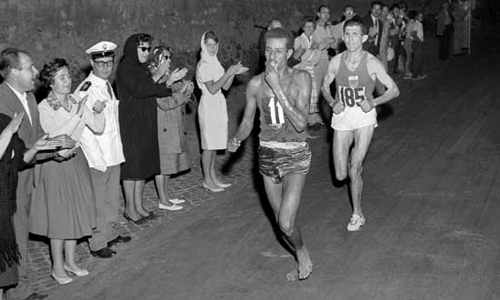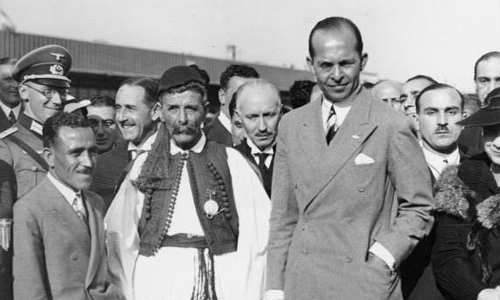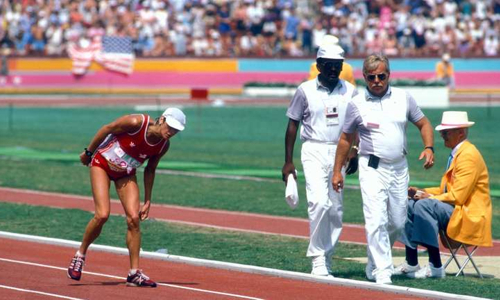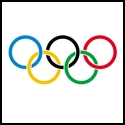Olympic Games Marathon trivia
ON THE FOOTSTEPS OF THE FRENCH REVOLUTION - The route of Paris 2024 marathon was inspired by the Women's March on Versailles. It was one of the earliest and most impactful events of the French Revolution. Thousands of Parisian women, primarily market women and working-class citizens, frustrated by the high cost and scarcity of bread, decided to take their grievances directly to King Louis XVI. They gathered in Paris and began their march to the Palace of Versailles, a distance of approximately 19 kilometers (around 12 miles), where they successfully pressured the king to agree to their demands, including signing the Declaration of the Rights of Man and of the Citizen. More importantly, they compelled the royal family to move from Versailles to the Tuileries Palace in Paris, effectively bringing the king closer to the people and under the watch of the revolutionaries. The Paris 2024 marathon course draws inspiration from this historic march by symbolically retracing part of the route that the women took - starting in the heart of Paris and heading toward Versailles, just as the march did in 1789. The course then returned to Paris, much like how the revolutionaries brought the king back to the capital.
STROLLING DOWN THE MALL - The men's Olympic marathon is the last event of the athletics calendar and it is custom that the finish line is inside the host city's Olympic stadium. This tradition was not followed in the London 2012 marathon. The race ended at The Mall, a road in the City of Westminster, in central London, between Buckingham Palace and Trafalgar Square.
MARATHON DISTANCE MAY VARY - During the first several modern Olympics, the marathon was always an approximate distance. Shorter distances include: 40 km in 1896 (24.86 miles), 40,260 km in 1900 (25.02 miles), 40 km in 1904 (24.85 miles), 40,200 km in 1912 (24.98 miles), and 40,750 km in 1920 (25.32 miles). For the 1908 Olympic Games in London, the British royal family requested that the marathon begin at the Windsor Castle so that the royal children could witness its start. As a result, the marathon distance was changed to 26 miles to cover the ground from Windsor Castle to White City Stadium, with 385 yards added on so the race could finish in front of royal family's viewing box. The total distance from the Windsor Castle to the Olympic Stadium was 42,195 meters (or 26 miles and 385 yards). In 1924, this distance became the standardized length of a marathon.
ME TOO - A Greek woman, Stamata Revithi, ran the Athens 1896 marathon. The Games excluded women from competition, but Revithi insisted that she be allowed to run. Revithi ran one day after the men had completed the official race, and although she finished the marathon in approximately 5 hours and 30 minutes and found witnesses to sign their names and verify the running time, she was not allowed to enter the Panathinaiko Stadium at the end of the race.
RUNNING ON A COATED COURSE - To address high temperature concerns in the Tokyo 2020 marathon, the organizers pushed back the men's and women's marathons one hour to start at 6 o'clock in the morning. Additionally some of the heat countermeasures included using electric fans, large-scale misting towers and coating 85 miles of roads in the city's center with a special substance that reflects infrared rays to reduce the course temperature (and air temperature above it) by 8 degrees.
BRANDY & STRYCHNINE - The winner of the St Louis 1904 marathon, Thomas Hicks from the United States, ate eggs and drank glasses of brandy during his run. As he was hitting the proverbial wall, his assistants gave him a dose of 1/60 of a grain (roughly 1 milligram) of strychnine. This first dose did not energize him for long, so he was given another and, as a result, he collapsed after crossing the finishing line. A third dose might have been fatal.

BAREFOOT WINNER - Ethiopian runner Abebe Bikila won the Roma 1960 marathon while running barefoot. This made him the first sub-Saharan African Olympic gold medallist. In the 1961 Athens Classical Marathon, Abebe again won while running barefoot. This was the second and last event in which he competed without running shoes. At the Tokyo 1964 marathon, Abebe became the first athlete to successfully defend an Olympic marathon title.
ZERO TO HERO - Around the halfway point of the London 2012 marathon, Tiki Gelana from Ethiopia tripped and fell, knocked down by another participant as she reached for her water bottle. The incident left her with the right elbow bleeding, but her determination was strong - she was able to recover, make up for the time lost, and win the marathon in 2:23:07.
DATING BACK TO 490 BC - The marathon was originally conceived as a race for the 1896 Olympics in Athens to commemorate the run of the soldier Pheidippides from a battlefield at the site of the town of Marathon, Greece, to Athens in 490 bC. Legend has it that Pheidippides delivered the momentous message "Nike!" ("Victory!"), then collapsed and died.
FIRST KOREAN GOLD MEDAL GOES TO JAPAN - The Berlin 1936 men's marathon, won by Sohn Kee-chung, was the first ever Olympic gold medal for Korea. However, during the time of the Games, Korea was a colony of Japan so the medal remains credited as Japan's first victory in the Olympic marathon. Sohn, who competed as members of Japanese team and had to use his Japanese name (Son Kitei), at the medal ceremony bowed his head during the Japanese anthem and remarked that he was ashamed to compete for an occupying power, rather than for an independent Korea. A Korean newspaper, the "Dong-a Ilbo", obscured the Japanese rising sun symbol on Sohn's uniform in a photograph of the victory ceremony, resulting in the Japanese government suspending the newspaper and jailing some of its employees.
SLOWEST FINISHERS - The slowest man to ever finish an Olympic marathon is Abdel Baser Wasiqi from Afghanistan who completed the Atlanta 1996 Olympic marathon in 4:24:17. The slowest woman to finish an Olympic marathon is Kinzang Lhamo from Bhutan who completed the Paris 2024 Olympic marathon in 3:52:59.

COLLECTIBLE RUNNING SHOES - To celebrate the Tokyo 2020 Olympic games, Asics - gold partner of the event - has released a limited version of its popular Gel-Quantum series running shoes. The shoes, designed in vibrant colors with "Tokyo 2020" stamp on side and official Olympics logo on the back, feature gel cushioning in the rearfoot and forefoot, and are available for both men or women.
HANDSOME APPLES ARE SOMETIMES SOUR - Cuban runner Félix de la Caridad Carvajal y Soto, known as Andarín Carvajal, mailman and former messenger for the Independence Army, was the favorite in the St. Louis 1904 Olympic marathon. He managed to quickly take great advantage over the other participants and lead the race, but stopped around the twenty-ninth kilometer to eat some apples. Because of the heat, the humidity, the fatigue and the fact that he had not eaten for more than forty hours, Carvajal fell immediately sick, experiencing a strong stomachache that forced him to stop several times. He eventually was able to resume the race, and finished in fourth position.
GREAT JOB! - East German athlete Waldemar Cierpinski won the Montreal 1976 marathon but he ran four hundred additional meters, believing that the indication of the last lap, displayed on the electronic scoreboard, referred to him and not to the second incoming athlete, the American Frank Shorter. Because of this error, when Cierpinski crossed the finish line for the second time, he found Shorter waiting for him to shake his hand.
4-HOUR FINISHERS - Out of a total of 3234 Olympic marathoners to date, only 5 (0.15%) took more than four hours to complete the marathon course.
FATAL MARATHON - The 21-year-old Portuguese runner Francisco Lázaro collapsed from sunstroke and heart trouble at the 29 kilometer mark of the Stockholm 1912 marathon. He did not finish the race and died the next day.
FIFTY YEARS TO FINISH THE MARATHON - The Japanese athlete Shizo Kanaguri did not finish the Stockholm 1912 marathon the same day he started it. Because of the high temperature of that Summer day, he lost consciousness along the course of the race. After finding help and care in a nearby farm, Kanaguri returned to Japan without notifying race officials. Fifty years later he decided to complete the marathon and crossed the finish line with the (unofficial) time of 54 years, 8 months, 6 days, 8 hours, 32 minutes and 20.3 seconds.
EVERYTHING HAS A PRICE - The silver cup awarded to Spiridon Louis, the Greek runner who won the first Olympic marathon in Athens 1896, went for 541,250 pounds ($861,000) at the Christie's auction house in London on April 18, 2012. The cup was sold by Louis' grandson, who shares the same name as his grandfather, and the winner of this Olympic memorabilia auction was the Stavros Niarchos Foundation, that plans to display the cup in a major cultural center in Athens. Spiridon Louis was presented with the cup, a silver medal, an antique vase, an olive branch and a diploma by king George I of Greece.
SUB-2:10 FINISHERS - Out of a total of 3234 Olympic marathoners to date, only 29 (0.9%) took less than two hours and ten minutes to complete the marathon course.
THE FIRST MARATHONER - The Athens 1896 was the first Olympic marathon ever held, as this race was specifically invented to be part of the Athletics programme, but it was not the first marathon. On March 10, 1896, Greece held the Panhellenic Games to define the team that would compete in the first modern Olympic Games later the same year. The Panhellenic Games marathon served as a qualifier for the Olympic marathon. Most of the participants were young soldiers who had been selected for their athletic skill. The Greek Charilaos Vasilakos, born and raised in a mountainous village, already had a reputation as a strong long distance runner, and was the first athlete to ever win a marathon race, with a time of 3 hours and 18 minutes. Vasilakos was then one of 17 athletes to start the first Olympic marathon race in Athens 1896 and he finished in second place with a time of 3:06:03.
JUST KIDDING - In the St. Louis 1904 marathon, the American athlete Frederick Lorz collapsed because of exhaustion after nine miles. His manager gave him a lift in his car for the next eleven miles, but after the car broke down, Lorz continued on foot back to the Olympic stadium, where he was greeted as the winner of the race. Though he initially went along with it, spectators claimed that he had not run the entire race and he soon admitted that it was a joke. Lorz was banned for life by the Amateur Athletic Union, but was reinstated after he apologized for the stunt and it was found that he had not intended to defraud.
UNDERCOVER LUXEMBOURGIAN MARATHONER - Little is known about Michel Johann Théato, the winner of the Paris 1900 Olympic marathon. Many used to believe he worked as a baker's delivery boy in Paris and his victory was disputed by several runners, notably American Arthur Newton, who claimed that Théato had taken shortcuts, helped by his knowledge of the Parisian streets through his alleged occupation. For a long while, it was also assumed that Théato was French, and only in the late 20th century it was discovered that he was born in Luxembourg. However, because he competed for France, the International Olympic Committee credits the medal to the French.
THE REFUGEE MARATHON MAN - After escaping a child labor camp during the Sudanese civil war when he was just a kid, Guor Marial took refuge in the United States of America. Several years later, in the "Twin Cities Marathon", his first-ever marathon, he met the Olympic qualifying standard with 2:14:32, but the nation he wanted to run for, the at the time newly independent South Sudan, had no national Olympic Committee yet. Gour Marial ran in London 2012 as an independent Olympian, under the auspices of the International Olympic Committee, and finished the marathon in 2:19:32.
WHERE THERE IS A WILL, THERE IS A WAY - Cuban marathoner Andarín Carvajal, who finished fourth in the St. Louis 1904 Olympic marathon, panhandled his ticket to America by begging for money in the streets of Havana. Once in the Unites States, he hitchhiked his way to Saint Louis to compete in the Olympics.

THREE IS A CROWD - All-time Estonia participation in the Olympic women's marathon doubled, going from three to six total, when sisters Lily, Leila and Liina Luik took part in the Rio 2016 event. The blonde triplets, however, did not finish together: Lily completed the marathon in 2:48:29 (97th in the list of results), Leila in 2:54:38 (114th), while Liina failed to cross the finish line because of the heat.
LIFELONG SHAVING - Spiridon Louis, who won the Athens 1896 marathon, was celebrated by thousands of his compatriots, thrilled to see a Greek winning the key event in the first Olympic Games. Among the enthusiastic fans, a barber, who promised Spiridon free beard shaving for life.
AN ARMY OF ONE - Afghan Olympic marathoner Abdul Baser Wasiqi, who finished last in the Atlanta 1996 marathon in 4:24:17, almost one and a half hour behind the second-to-the-last participant (with a 1:24:22 gap), constituted his nation's entire Olympic team.
A FRENCHMAN IN MISSOURI - In 1903 Albert Corey (birth name Louis Albert Coray) came to the United States and changed his name to Corey. He competed at the 1904 St. Louis marathon as a French athlete, but because he showed up without the correct documents, he ended up being listed with the United States team. He won the silver medal in 3:34:52. Although the Games report refers to Corey as a "Frenchman wearing the colors of the Chicago Athletic Association", the International Olympic Committee attributes his medal in the marathon to the United States instead of France.
POLITICAL FINISH - Feyisa Lilesa of Ethiopia was the silver medalist in the Rio 2016 marathon. As he neared the line, he crossed his arms above his head – a political gesture in solidarity with Oromo protests in Ethiopia. After the race he stated: "The Ethiopian government is killing my people so I stand with all protests anywhere, as Oromo is my tribe. My relatives are in prison and if they talk about democratic rights they are killed."
WRONG TURN - Ernst Fast was leading the Paris 1900 marathon when a policeman, not familiar with the race course, pointed him in the wrong direction. The Swedish marathoner finished third, losing the podium to Michel Théato and Émile Champion.

OLIVE BRANCH - Spiridon Louis, the Greek runner who won the first Olympic marathon in Athens 1896, was invited to be a guest of honour by the organizers of the Berlin 1936 Summer Olympics. After bearing the banner of the Greek team during the opening ceremonies, he was received by Adolf Hitler and offered him an olive branch from Olympia, the birthplace of the Olympic Games, as a symbol of peace. This was Spiridon Louis last public appearance. He died in March 1940 without witnessing the invasion of Greece.
FIRST, THIRD, LAST - While leading the Athens 2004 marathon, the Brazilian athlete Vanderlei de Lima was attacked by Cornelius Horan, a "spectator" not new to these type of stunts. Pushed to the side of the road, de Lima lost most of his lead, in the last four kilometers was surpassed by Stefano Baldini and Mebrahtom Keflezighi, and finished in third place. The Brazilian Athletic Federation asked that he still be awarded gold, but the appeal was rejected. In 2016 the city of Rio de Janeiro, which hosted the Games, to make up for the unfortunate event wanted the marathon runner to be the last torchbearer, the one in charge of lighting the Olympic brazier at the opening ceremony.
THE OTHER GOLD MEDAL - The first women's Olympic marathon, in Los Angeles 1984, is also remembered for the dramatic arrival of the Swiss athlete Gabriela Andersen-Schiess: exhausted, dehydrated and suffering from a muscle strain, she took almost 6 minutes to cover the last 400 meters of the race but was able to cross the finish line before being finally brought to the hospital. U.S. President Ronald Reagan invited her to the White House to compliment her on her courage and rewarded her with a special gold medal.
This website is not sponsored by or affiliated with the Olympics, or the International Olympic Committee (IOC). Trademarks featured or referred to on this website are the property of their respective trademark holders and not Aerostato or www.olympicgamesmarathon.com. This website provides archived data only as a service to Olympic Games marathon enthusiasts: please visit the LOS ANGELES 2028 official website to get the latest Olympic Games news.
Since July 2008 - ©
Aerostato, Seattle - All Rights Reserved.
JOIN THE WORLDWIDE RUNNING NETWORK
5kCalendar.com |
AccidentalAthlete.com |
CalendarioTrail.it |
CorrereNelDeserto.com |
DeadRunnersSociety.com |
HalfMarathon.net |
ePodismo.com |
MarathonCoupons.com |
Maratone & Maratoneti |
OlympicGamesMarathon.com |
RoadRacingStats.com |
Run100Days.com |
RunningCalendar.com |
RunningInItaly.com |
TuttoMaratona.com |
Ultramaratona.it |
VerticalRunning.it |
WorldwideRunning.com



